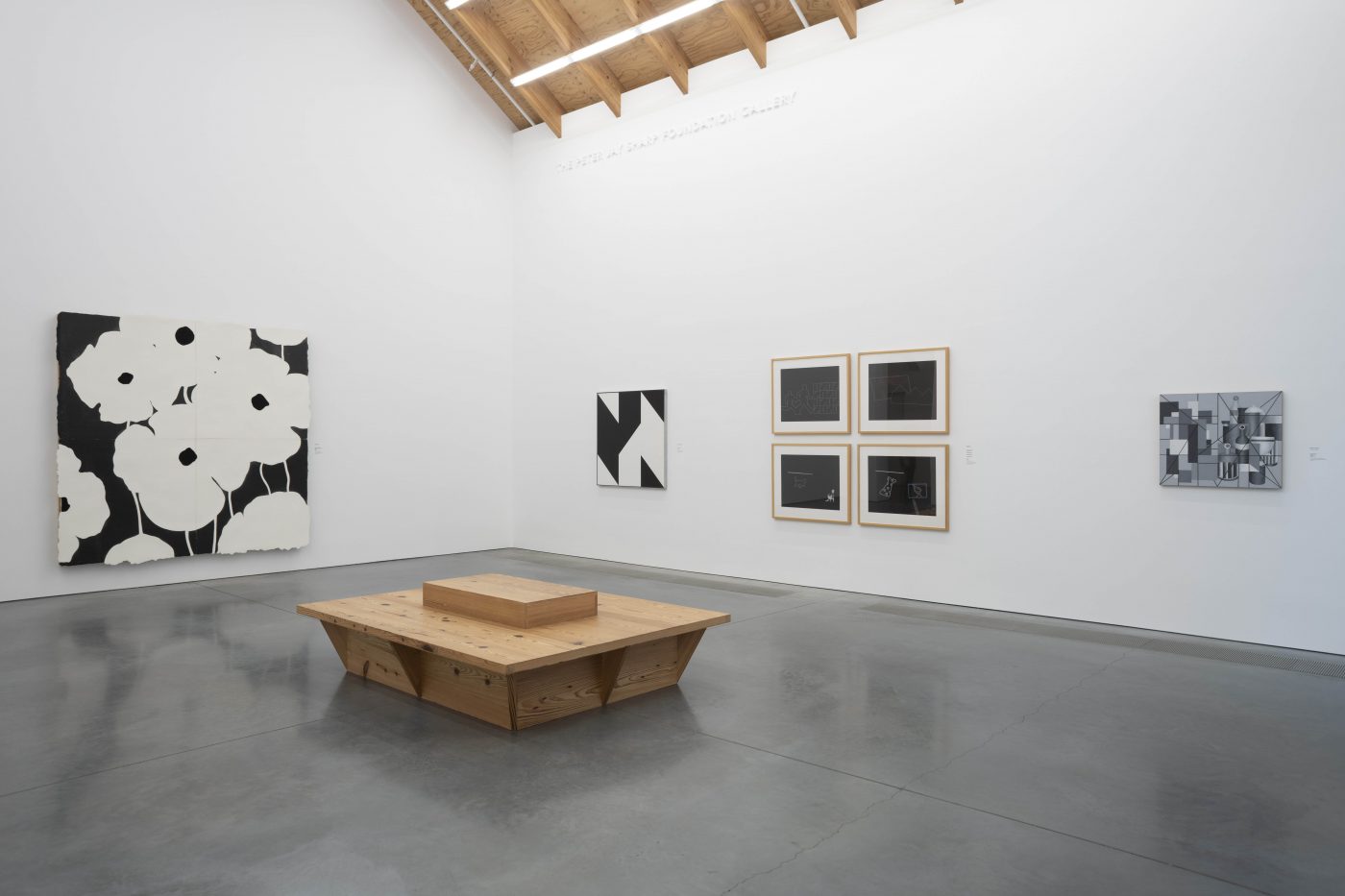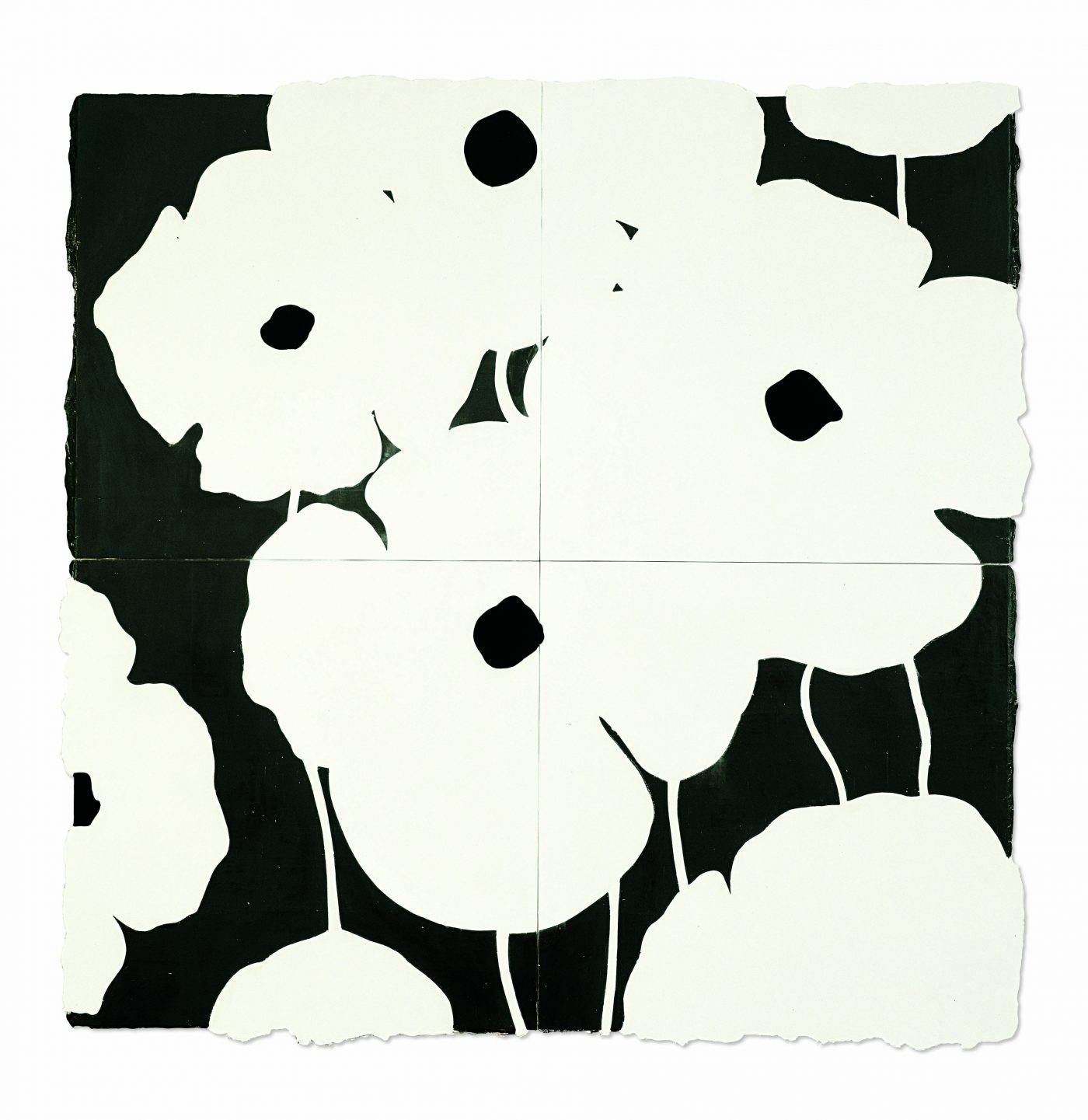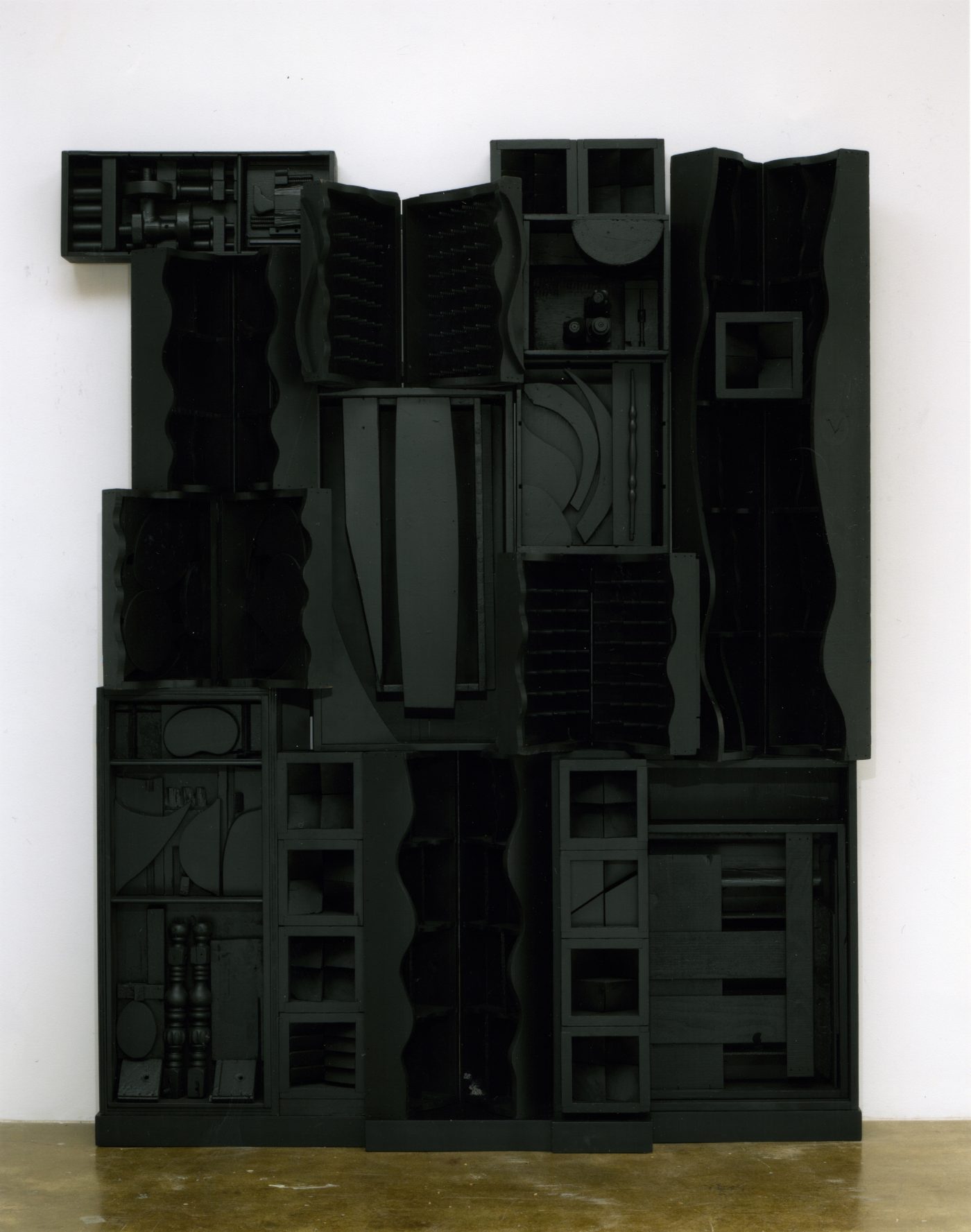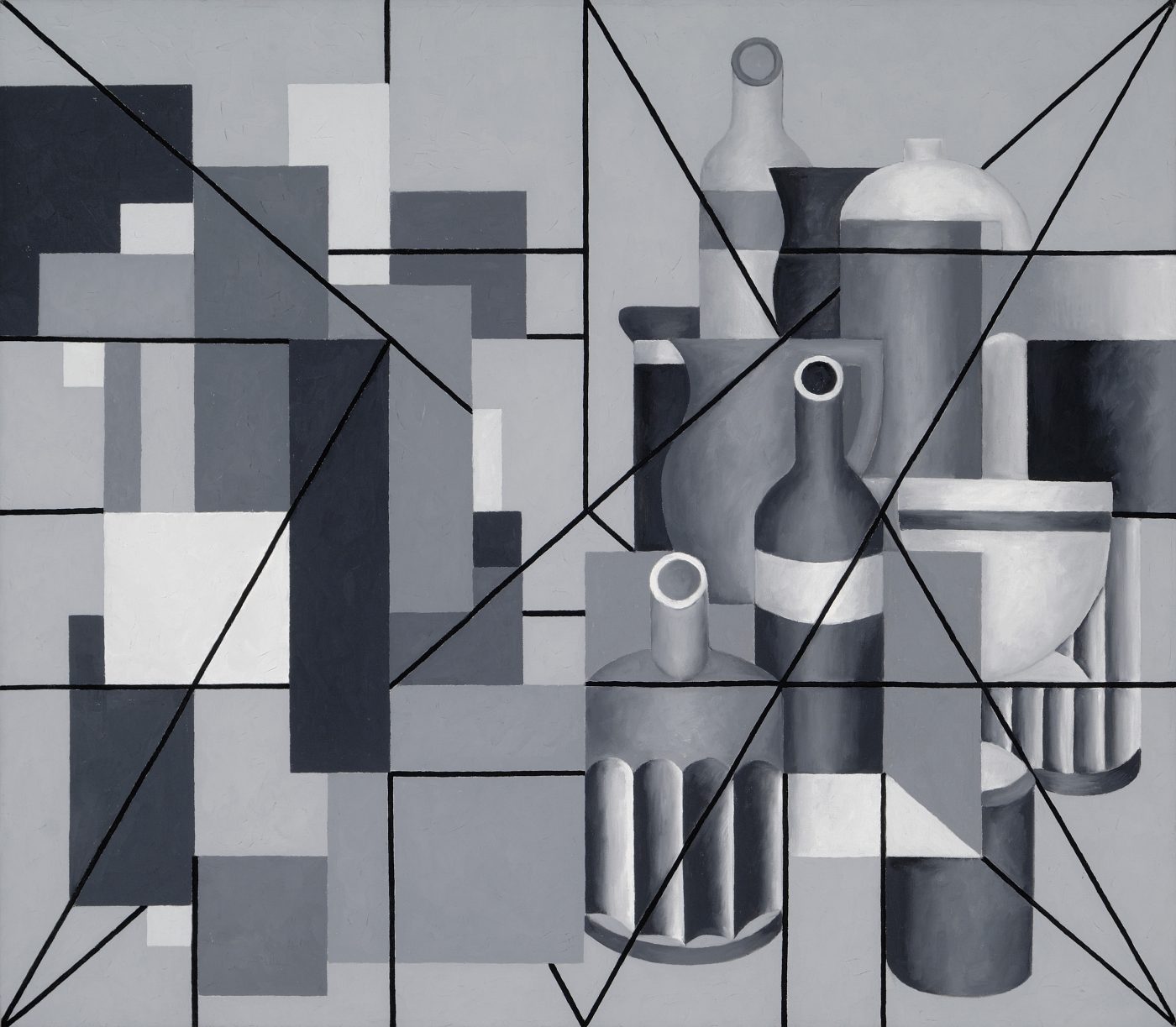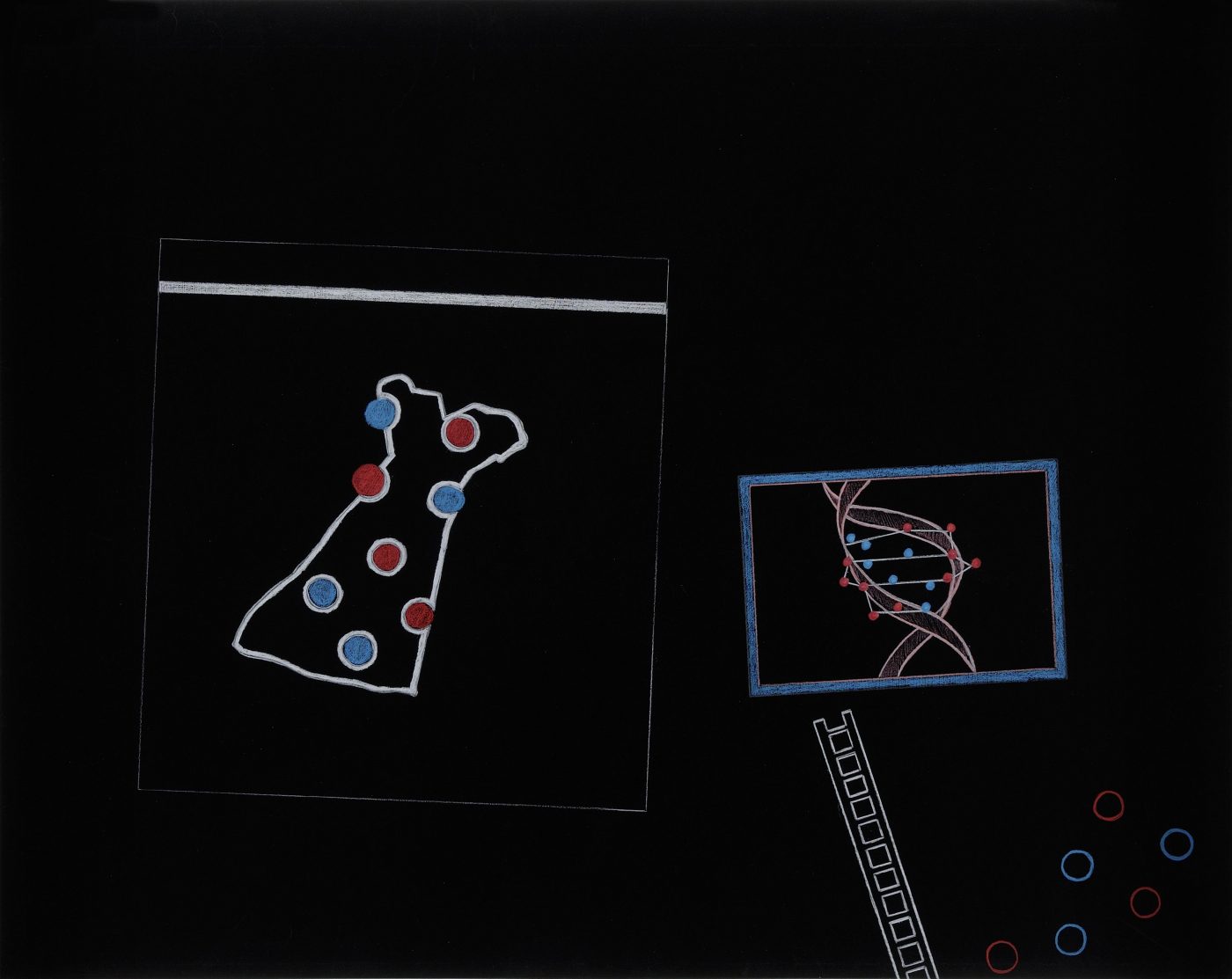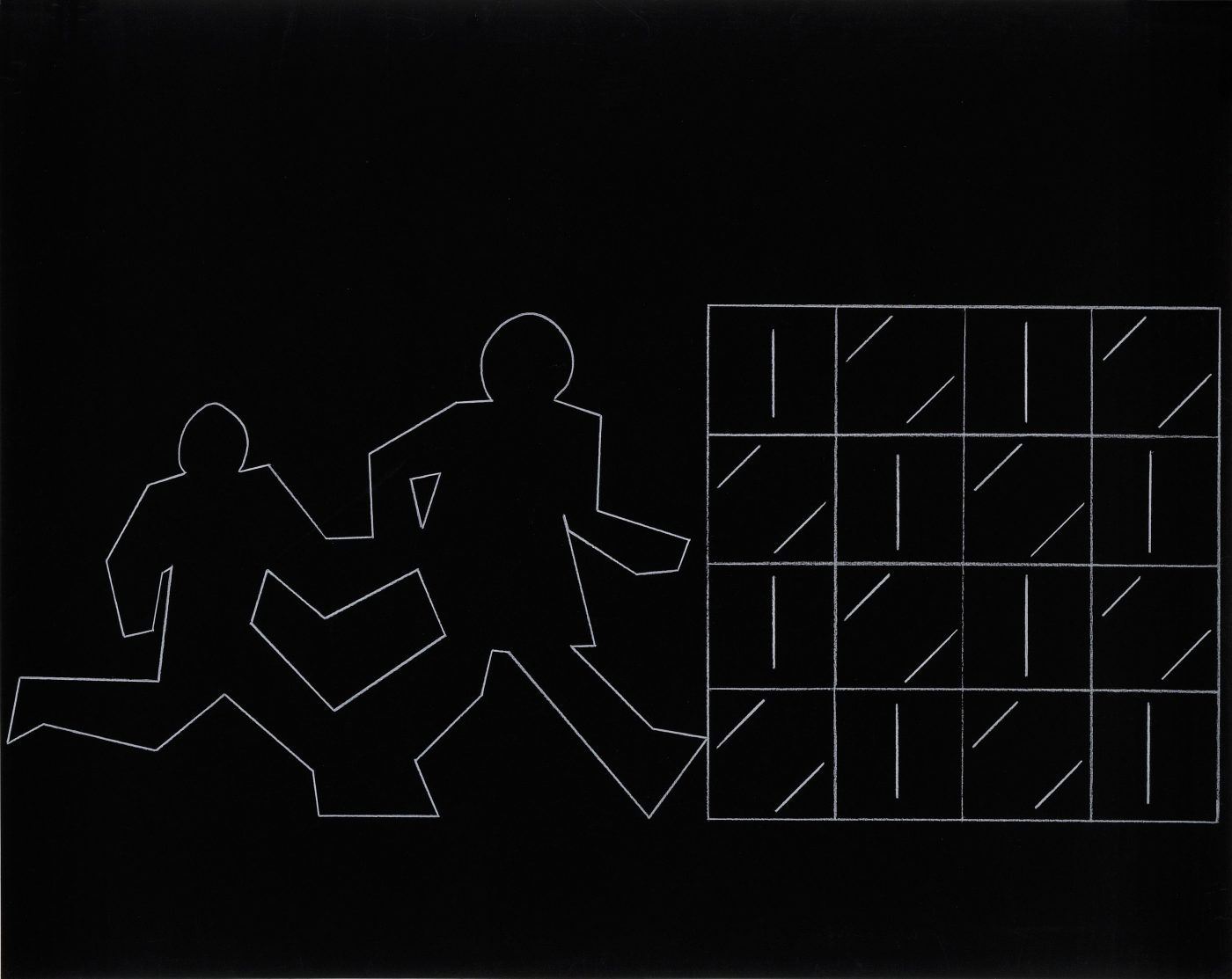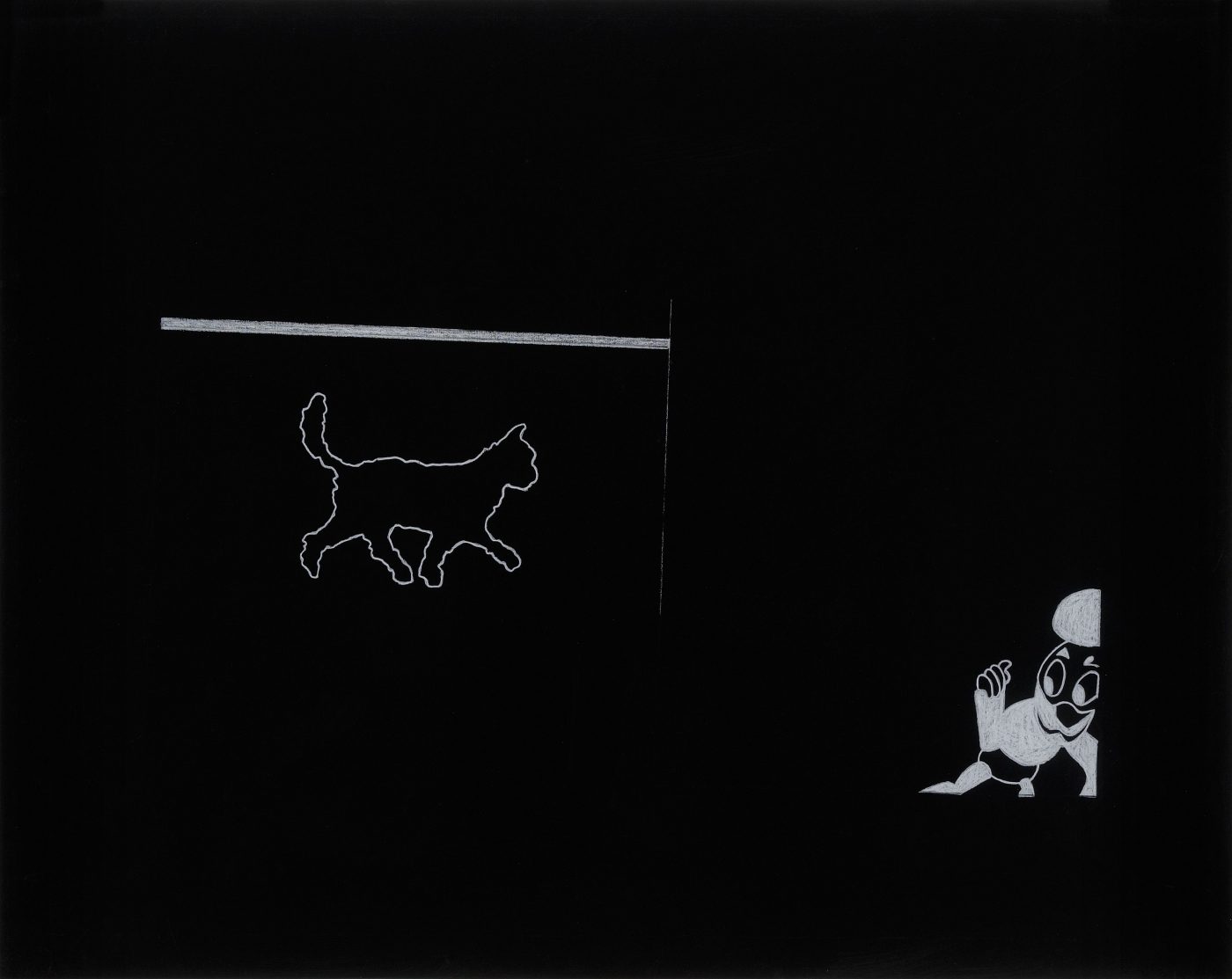Black and white are monochromes but not colors; black is the absence or complete absorption of visible light, a color without hue; white is light—the combination of all the colors on the spectrum. A black and white subject is one with clarity and ease of understanding, expressions without confusion, doubt, or difference. The works brought together here provide an opportunity for visual and emotional conversations that are far more nuanced than black and white would infer; like a gathering of disparate personalities, the works provide comparisons and contrasts in both style and meaning.
The works of art on view in this gallery were created over a period of 35 years, demonstrating a rich variety of creative approaches. Placed directly across from one another, Sultan’s White Poppies with Flocked Centers March 3 2002 (2002) and Nevelson’s Untitled (ca. 1978) become a visual essay on materials and form. Both artists use non-traditional, industrial materials to create large-scale works that allude to imagery within abstract form. Frederick Hammersley gained critical recognition in 1959 as one of the West Coast artists who pushed back against the gestures of Abstract Expressionism. His Poles a part, #8 (1980) is a prime example of “hard-edge” geometric painting with flat shapes and sharp edges. Similarly, Valerie Jaudon is committed to geometric symmetry and subtlety, clearly seen in Blue Springs (1981). In Succession (1986) by Richard Kalina, we see the shifting composition between the readily recognizable forms of a still life composition and abstracted geometric overlay. By contrast, Margaret Garret’s Journal, Winter (2013) is full of line, movement, and subtle tones, inspired by music and dance.
Alice Aycock’s drawing, The Rosetta Stone City Intersected by the Celestial Alphabet (1985), shows the artist’s interest in architectural elements, Egyptian hieroglyphics, Mesopotamian cuneiform, Native American pictographs, and Chinese and Sanskrit characters. Language of a different sort is the key to Gary Falk’s suite of untitled drawings (1981). Falk uses a vocabulary of reduced images that act as both abstract forms and a personal sign system to explore narratives that hover between form and meaning, to generate an expanded moment where the concrete becomes the sublime.


